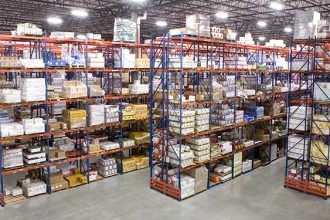Rack Safety Nets And Panels Stop Products From Falling, Part 2
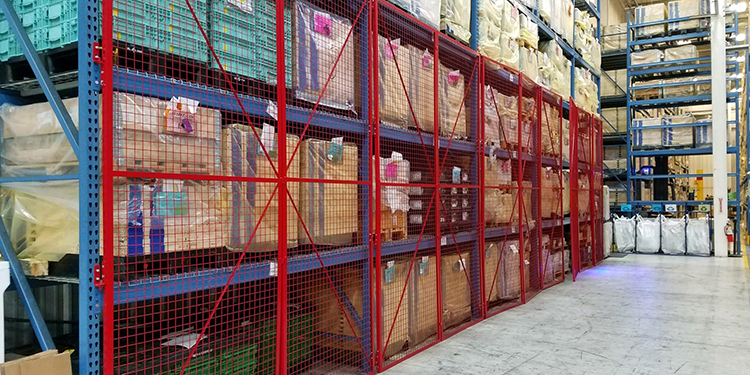
As detailed in a previous post, rack netting and steel mesh containment panels mitigate the forces of gravity. Installed directly on the rack, these protective guarding solutions catch items that tumble from the upper levels of pallet rack. This reduces the chance that a falling product will injure personnel or damage equipment. But every rack in a facility may not need this protection. Instead, it’s likely that installing rack safety nets and panels to stop products from falling in key areas will significantly minimize risks.
“There are several scenarios in which installing rack safety nets and panels is a best safety practice,” said Jonathan Hirst, Vice President and General Manager at North American Storage. The company is a member of the Rack Manufacturers Institute (RMI). “RMI members can help operations identify the areas at higher risk and make recommendations for the optimal solution.”
Key Areas for Installation of Rack Safety Nets and Panels
Both rack safety nets and panels provide product containment. Deciding which type to install where depends on a variety of factors. These include:
- The type of products stored in the racking. “Both types can contain lightweight products. Heavy, dense, or irregular products are potentially a better fit for steel mesh containment panels, or for products with sharp edges that might cut netting,” said Hirst.
- The amount of coverage needed. “Because steel mesh containment panels install separately, they can be pieced together. This creates zone guarding that protects certain areas only,” Hirst noted. “For example, they’re often used to shield sprinkler pipes running behind the rack from contact by pallet loads. Only one small run of protection is needed, so panels are a good fit. That said, it is possible to install multiple nets of varying heights or widths across specific bays.”
- The location of the rack within the facility. “A single row of rack, as opposed to two rows back-to-back, is a good candidate for rack safety nets and panels,” Hirst continued. “Particularly if the rack location backs up to a pedestrian walkway, vehicle travel path, work cells, areas with equipment and machinery, or above dock doors. In those areas, the risk of injury or asset damage from a falling product is exceptionally high. Containment guarding reduces those risks.”
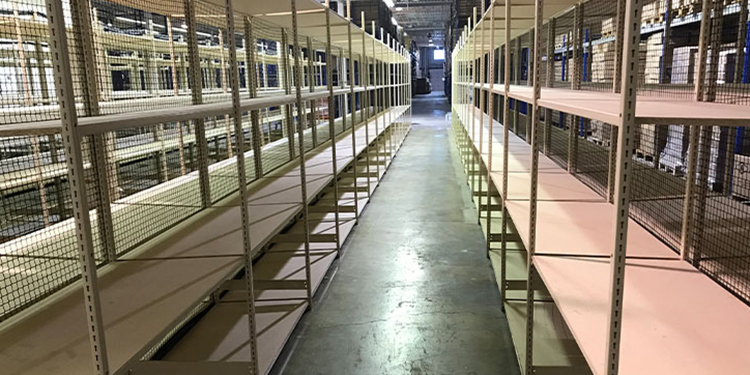
Other Reasons to Install Containment Guarding
In addition to rack location factors, there are several other reasons why an operation might install rack safety nets and panels.
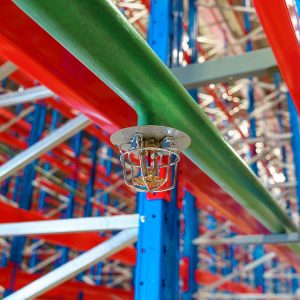 The degree of potential seismic activity in the area. “In some areas, depending on the local building code, installing containment guarding keeps pallets and materials off of building columns or walls,” explained Hirst. “Rack safety nets and panels maintain the required separation to accommodate seismic movement.”
The degree of potential seismic activity in the area. “In some areas, depending on the local building code, installing containment guarding keeps pallets and materials off of building columns or walls,” explained Hirst. “Rack safety nets and panels maintain the required separation to accommodate seismic movement.”- Building code requirements for fire suppression. “Local building and fire codes may require open flue spaces around all four sides of each pallet load stored in rack. Utilizing containment guarding prevents pallets and products from encroaching into these areas. That allows overhead sprinkler systems to function as intended,” Hirst said.
- The presence of in-rack tunnels. “In large pushback or pallet flow rack systems, tunnels to accommodate pedestrian and vehicle traffic are often integrated into the design,” noted Hirst. “Installing rack safety nets or panels overhead and along the sides of the tunnel protects personnel as they travel through the system on foot or forklift.”
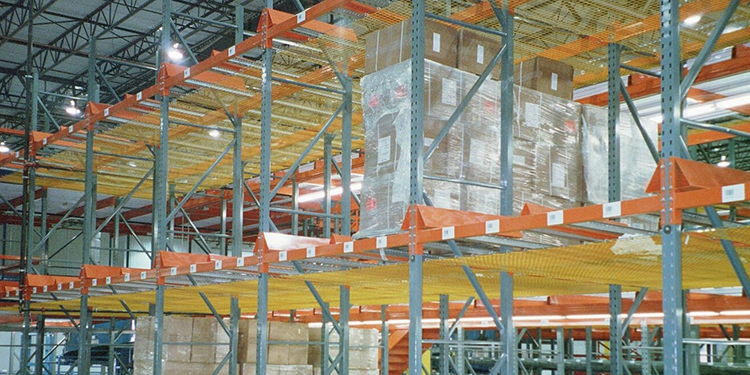
Include Rack-Mounted Containment Solutions in Rack Inspections
Once a system is in use, examine the guarding as part of conducting periodic rack inspections. This includes rack safety nets and panels. Hirst advised looking closely at all attachment points for both netting and steel mesh panels. Tighten or replace loose or missing bolts, carabiners, clips, brackets, or other attachment devices promptly.
“Also, if any tears, cuts, or rips exist in the netting, repair or replace it. Likewise, dents or deflection in steel mesh panels that inhibit their ability to provide protection should also be replaced,” he said.
Learn More About Protective Rack Guarding
Looking for more insights into protective rack guarding and devices? RMI offers several resources and publications. The recently updated “Considerations for the Planning and Use of Industrial Steel Storage Racks” includes a section on guarding. Additionally, the members of RMI are available to discuss the options and make recommendations. For more information, visit mhi.org/rmi.

